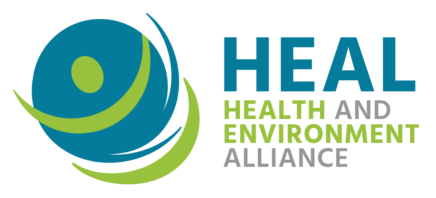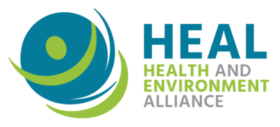HEAL welcomes the call from 250 scientists urging the European Commission to follow scientific recommendations and include provisions to account for the effects of chemical mixtures to better protect health in the upcoming revision of REACH, the EU’s regulation for chemicals.
Brussels, 15 March 2017 – Today’s finding by the European Chemicals Agency (ECHA) that glyphosate is not a carcinogen has been greeted with grave concern and disappointment in the health and environment community, says the Health and Environment Alliance (HEAL). (1) The opinion from ECHA’s Committee for Risk Assessment contradicts that of the world’s most authoritative cancer research agency – the World Health Organization’s International Agency for Research on Cancer (IARC), which classified glyphosate as a ‘probable carcinogen’ in 2015. Génon K. Jensen, Executive Director, HEAL says today’s decision is a setback for cancer prevention. “We expect that in the future, IARC will be recognised as having been right. But meanwhile, Europe is set to give glyphosate the green light and therefore public health will lose out on an important opportunity for cancer prevention. Cancer rates can be brought down by taking hazardous chemicals off the market,” she said. HEAL has worked for many years to gain greater attention for the health impacts of exposure to glyphosate and other chemicals. Calls for removing glyphosate from the market have been part of a strategy in cancer prevention supported by the Association of European Cancer Leagues (2) as well as with HEAL members working on cancer prevention. The ECHA opinion is not easy to comprehend. Ms Jensen continues: “IARC is the gold standard of cancer evaluation. It is hard to see that the EU’s own institutions come to such a starkly different result: ECHA’s committee did not even give glyphosate the ranking of a ‘possible carcinogen’. This is the sort of contradiction that feeds public suspicion about the reliability of EU scientific agencies’ opinions”. A paper published this month was critical of the opinion of EFSA and BfR. In “The Carcinogenic Hazard of Glyphosate”, toxicologist Peter Clausing provides the scientific arguments for why EFSA and BfR are wrong to reject the findings of these studies. (3). The ECHA evaluation, while acknowledging the increases in tumour incidence in a limited way, seems to suffer from the same analytical problems as EFSA and BfR in reaching its finding that they do not constitute sufficient evidence of carcinogenicity. Growing unease exists about the lack of transparency in the classification process of the European agencies. A joint letter to the Commission by Greenpeace, HEAL and many other groups (4) pointed out that the ECHA committee was using “unpublished scientific evidence provided by industry in formulating its opinions”, in addition to studies published in peer-reviewed journals. The letter also expressed concerns about the conflicts of interest of some of the members of the ECHA expert committee. “We respectfully ask you to enforce and improve ECHA’s policies to safeguard its independence from industry and transparency of its work,” the letter says. In February 2017, European Commissioner for health and food safety, Vytinis Andriukaitis also expressed concerns, and suggested that reform might be needed. According to minutes of a European Commission meeting (5), he said that: “He felt that the main problem was the public’s lack of confidence in science and the feeling that Europe was not sufficiently protecting them from the effects of certain chemical substances.” The minutes continued that Andriukaitis felt that this implied, “a reform of the EU agencies responsible for providing the scientific basis for these decisions and of their procedures, to make them more transparent”. Evidence of the harm to health from glyphosate continues to grow. Very recently, a study on rats showed low-dose, long term exposure caused non-alcoholic liver disease, which has been linked to liver cancer. (6)


